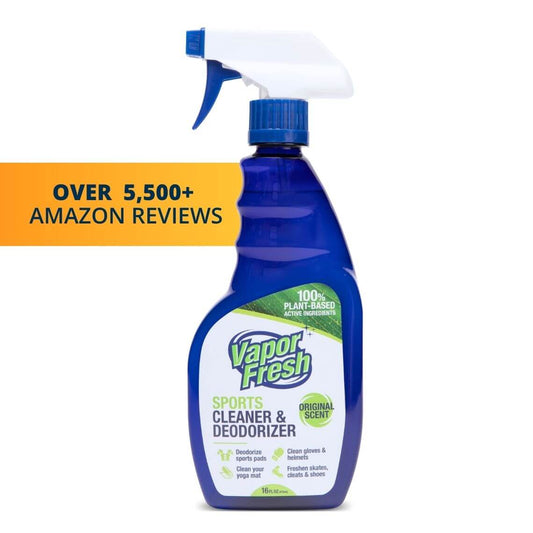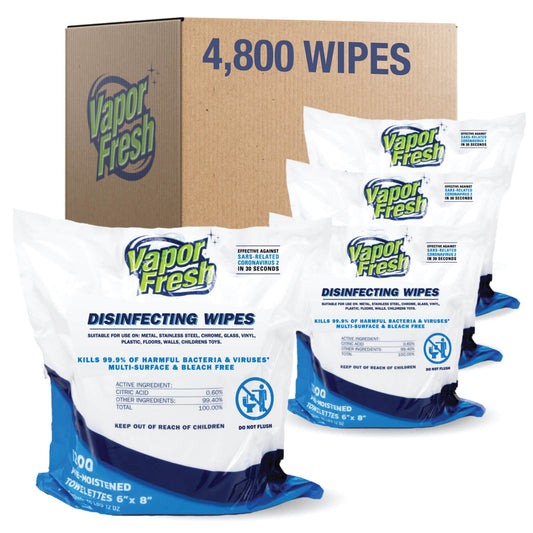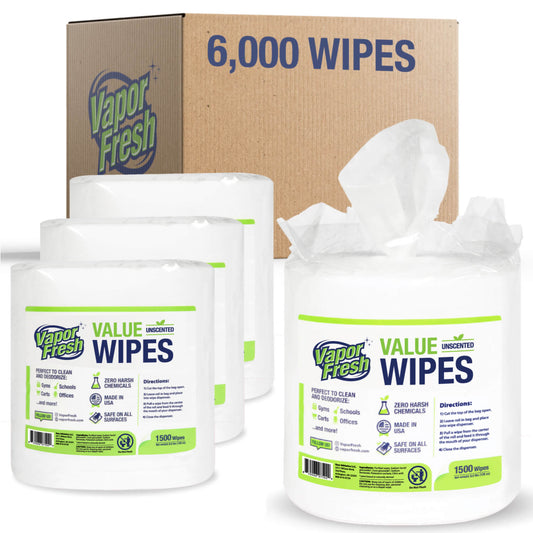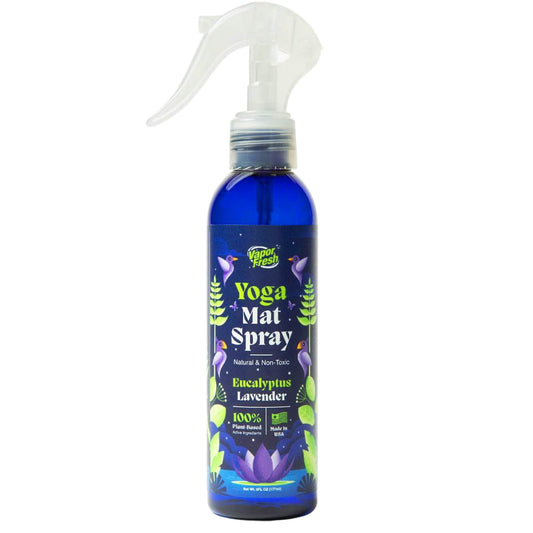If you look at the labels of nearly all other disinfecting wipes on the market, you’ll see they list some derivative of these active ingredients:
- Quaternary Ammonium Compounds (Quats)
- Alkyl (60% C14, 30% C16, 5% C12, 5% C18) dimethyl benzyl ammonium chloride
- N-Alkyl (68% C12, 32% C14) dimethyl ethylenbenzyl ammonium chloride
- Alkyl (50%C14, 40%C12, 10%C16) dimethyl benzyl ammonium chloride
- Octyl decyl dimethyl ammonium chloride
- Didecyl dimethyl ammonium chloride
- Dioctyl dimethyl ammonium chloride
- Benzalkonium chloride
- Others
- Hydrogen peroxide
- Sodium hypochlorite
Quats are the most common active ingredient in disinfecting wipes, but there are many reasons to avoid using a quat disinfectant due to health risks associated with them, from lung and skin irritations to more serious mutagenic and reproductive concerns. An article published in the American Journal of Infection Control states that some quats are “mutagenic and have been shown to damage animal DNA and DNA in human lymphocytes at much lower levels than are present in cleaning chemicals”. If that’s not worrisome enough, quats also pose environmental threats particularly to aquatic life.
Some of the alternatives to quats aren’t necessarily better. Sodium hypochlorite, or bleach, is also a serious asthmagen and poses potential risks of toxic gas release. And while hydrogen peroxide is less of an inhalant toxin than bleach, it still has indoor air quality issues. Use of a hydrogen peroxide disinfectant can increase the level of airborne H2O2 to 60% of the maximum allowed limit or over 600x the natural levels. The CDC also says that prolonged exposure to hydrogen peroxide can lead to lung, skin and eye irritation as well. And these are just the health consequences. Both hydrogen peroxide and bleach are particularly corrosive on surfaces you may want to disinfect.














